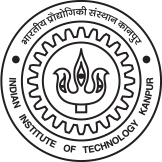
Prerequisites:
3-0-0-9
Course Contents
Hydrologic cycle, systems concept, hydrologic model classification; Reynold's Transport Theorem, continuity, momentum, and energy equations; Atmospheric hydrology: atmospheric circulation, water vapor, formation and forms of precipitation, precipitable water, monsoon characteristics in India, Thunderstorm Cell model, IDF relationships; factors affecting evaporation, estimation and measurement of evaporation, energy balance method, aerodynamic method, Priestley Taylor method, and pan evaporation; Surface Water: Catchments storage concept, Hortonian and saturation overland flow, stream flow hydrographs, base flow separation, index, ERH & DRH, algorithm for abstraction using Green Amptequation, SCS method, overland and channel flow modeling, time area concepts, and stream networks; Unit Hydrograph: General hydrologic system model, response functions of a linear hydrologic systems and their interrelationships, convolution equation; definition and limitations of a UH; UH derivation from single and complex storms; UH optimization using regression, matrix, and LP methods; Synthetic unit hydrograph, SCurve, IUH; Sub surface Water: Soil moisture, porosity, saturated and unsaturated flow; Richards' equation, infiltration, Horton's, Philip's, and Green Ampt methods, parameter estimation, pending time concepts; Groundwater Hydrology: Occurrence of groundwater, aquifers & their properties, Darcy's law, permeability, transmissibility, stratification, confined groundwater flow, unconfined groundwater flow under Dupit's assumptions; Well hydraulics, steady flow in to confined and unconfined wells; Unsteady flow in a confined aquifer.
Topics
Current Course Information
Instructor(s):
Number of sections:
Tutors for each section:
Schedule for Lectures:
Schedule for Tutorial:
Schedule for Labs:



